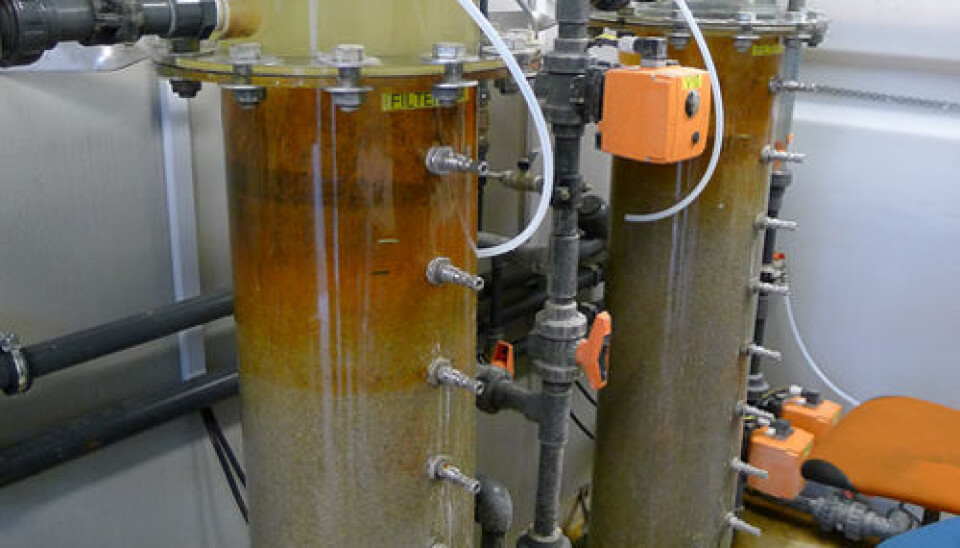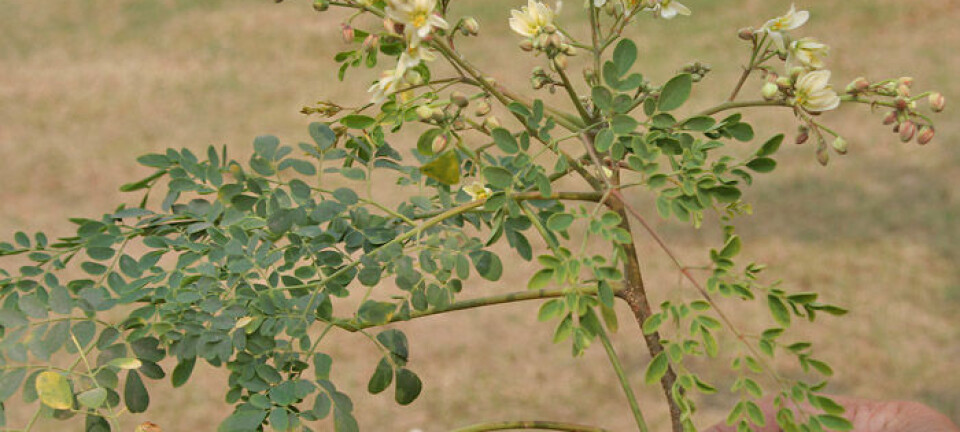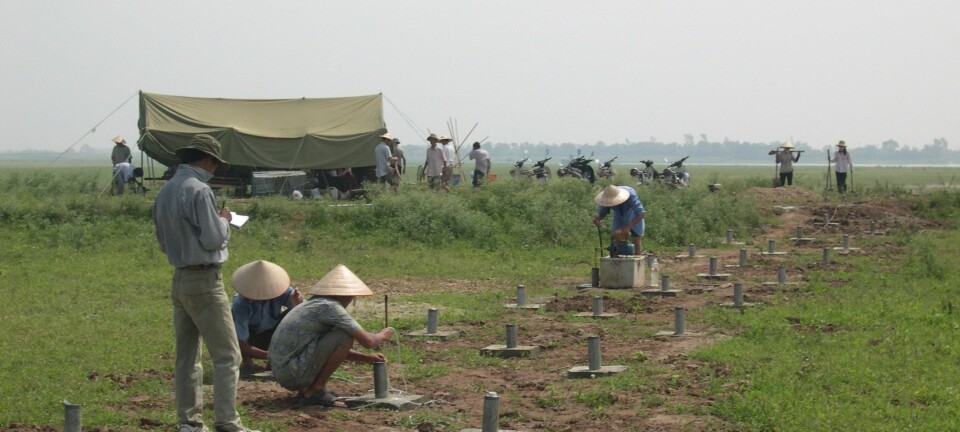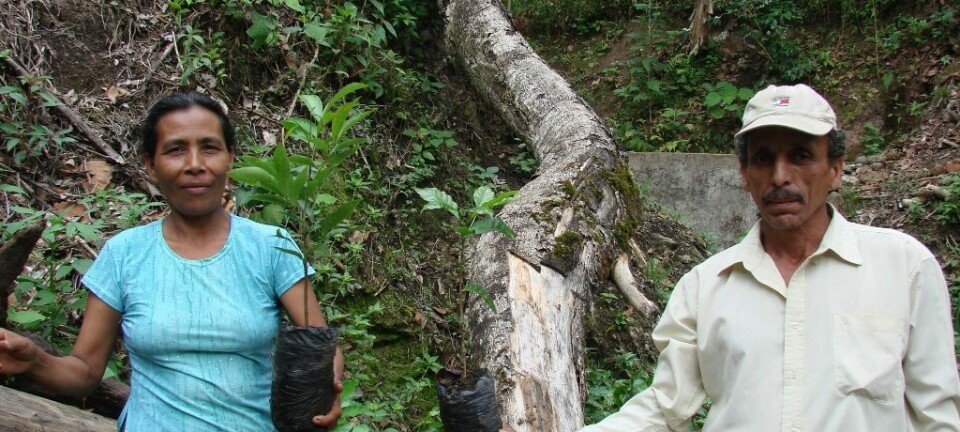
Soil bacteria can clean your drinking water
Bacteria that occur naturally in soil can effectively reduce the amounts of the pesticide residue BAM in drinking water.
In the future, waterworks will no longer need to spend time and money on removing a drinking water well that is contaminated with the substance BAM. They will only need to sprinkle bacteria into the filters of the system.
This became clear after a series of experiments carried out by GEUS – the Geological Survey of Denmark and Greenland.
“Our preliminary studies show that it’s actually possible to reduce BAM in drinking water by adding Aminobacter to the existing sand filters. During the 20 minutes it takes for the water to pass through the filters, the bacteria degrade half of the BAM contents in the water,” says Professor Jens Aamand, of GEUS’s Department of Geochemistry.
BAM not easily degraded
Many areas are contaminated with BAM because for many years the sprays Prefix and Casoron were heavily used. These contain the pesticide dichlobenil, which is rapidly degraded to BAM in the soil.
Our preliminary studies show that it’s actually possible to reduce BAM in drinking water by adding Aminobacter to the existing sand filters. During the 20 minutes it takes for the water to pass through the filters, the bacteria destroy half of the BAM contents in the water
This herbicide, however, did not appear to be easily degradable – large amounts of it are still around and it has seeped into the groundwater. This is the water that the water companies are currently pumping out of their drinking water wells and sending out to the consumers as tap water.
BAM converted into energy, carbon dioxide and water
Aamand spotted a great opportunity for solving the problem when one of his students, Anitta M. J. Christensen, discovered that the soil contains its own internal water purifying plant. She found that there was a great difference in how effective various soil samples from contaminated rural areas in Denmark were at degrading BAM.
This indicated that the soil contained micro-organisms that had adapted to the contaminated soil and had started to use BAM as an energy source.
We were a bit worried that the added bacteria might find sufficient nutrition in the filter when they had to compete with all the other bacteria for the resources. But this has turned out not to be a problem at all.
Aamand’s PhD student Maria Sommer Holtze then set out to determine which bacteria were responsible. It turned out to be Aminobacter sp. strain ASI1 and Aminobacter sp. strain MSH1.
All that was left from the bacteria’s ‘meal’ was a small amount of carbon dioxide a bit of water.
Soil bacteria removed half of the BAM
That a bacterium is capable of degrading BAM in soil does not necessarily mean that it can also purify water that flows rapidly through a water system.
This prompted the researchers to build a waterworks model in which they could see how the bacterium fared under these conditions.
Our upcoming studies will teach us more about the ideal amounts of bacteria to add to the filter, so that we can get entirely rid of BAM. We also want to ensure that BAM is converted entirely into carbon dioxide and water while the water is in the filter, or or perhaps we can benefit from letting the water remain longer in the filter before we send it out to the consumers.
As in any other waterworks system, the water in their miniature model flowed into the top of some tall containers that were densely packed with sand, which filters out many unwanted substances. These sand filters also contained Aminobacter bacteria.
The researchers let the water flow through the filter for 20 minutes, after which they measured the BAM concentrations. They found that adding Aminobactor had reduced the BAM contents by 50 percent. This was also the case in the BAM concentrations found in the groundwater (0.1 to 1 microgram per litre).
The bacteria thrive in their new home
Purifying water with bacteria may not sound very appetising. But Aminobacter bacteria are apparently harmless for humans and they cannot grow in the high temperatures in our bodies.
The sand in the filters also already contains a diverse population of micro-organisms which help remove other unwanted particles in the water, including iron and manganese.
“We were a bit worried that the added bacteria might find sufficient nutrition in the filter when they had to compete with all the other bacteria for the resources. But this has turned out not to be a problem at all,” says Aamand.
Spreading bacteria across the entire filter
But the researchers haven’t reached their goal yet, considering that the bacteria have only managed to reduce the BAM concentration by half. The reason that there are still some BAM residues left is probably that the bacteria do not fully penetrate into the sand filter and can therefore only remove unwanted substances in the upper layers of the filter.
The researchers are currently trying to find a way of spreading the bacteria to the entire column of water. One of the ideas that they are working on consists of a procedure known as ‘backwash’, which is used for cleaning and purifying water treatment filters.
During a backwash procedure, air is pressed through the sand filter in the opposite direction in relation to the water. The air then blows away the unwanted particles, including bacteria.
With a little creativity, however, this method may also be used to effectively spread Aminobacter out into all corners of the filter, so no BAMs can escape the bacteria.
Upcoming tests with a real borehole
Whether or not this is possible will become clearer in April when the researchers will start on a new and more comprehensive study using pilot scale waterworks, supplied by the company Krüger.
This system is connected to a real drinking water well with BAM-contaminated groundwater. In other words, the trials will be done under conditions similar to those of a real waterworks system.
“Our upcoming studies will teach us more about the ideal amounts of bacteria to add to the filter, so that we can get entirely rid of BAM. We also want to ensure that BAM is converted completely into carbon dioxide and water while the water is in the filter, or whether it may be necessary to let the water remain longer in the filter before we send it out to the consumers,” says the professor.
“In any case, our preliminary tests show that the bacteria can reduce the water’s BAM concentration quickly and effectively.”
The success with BAM has encouraged the researchers to go looking for soil bacteria that can degrade other unwanted substances in the water.
----------------------------
Read the Danish version of this article at videnskab.dk
Translated by: Dann Vinther






